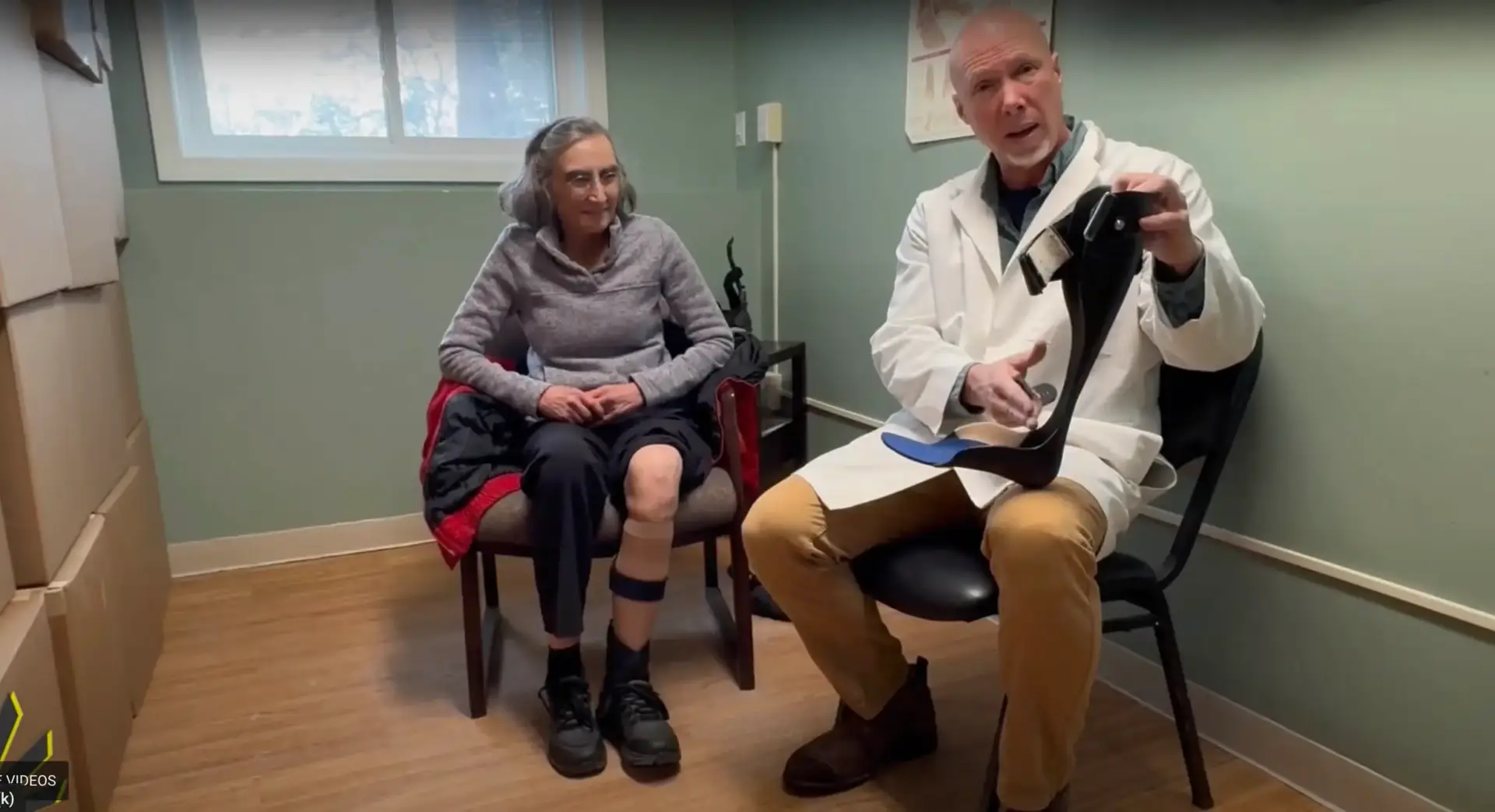Elaine Compares Her Carbon Fiber Brace with Step-Smart Brace for Drop Foot
Hi, it’s Ian, I’m with Elaine. Elaine comes
This video describes the history of the Step-Smart Brace and its biomechanical advantages
Video Transcript:
Insightful Products is an R&D company specializing in human ambulation. Our Step-Smart Brace is the first drop foot brace that manages both swing and stance phase. Drop foot is a secondary diagnosis resulting from a multitude of pathologies, such as disease, injuries, post-surgery, and idiopathic conditions. In short, it’s a functional deficit of the anterior compartment musculature that is responsible for two biomechanical requirements: clearance during swing phase and shock absorption during stance phase. The term drop foot was coined because that was the part of the gait you could see with the naked eye.
Until now, brace designs have ignored the stance phase part of gait because the human eye just can’t see fast enough the forces at work at heel strike. Half the management of shock absorption has been lost by the limb because the dorsiflexors are responsible for deceleration of the foot at heel strike. The orthopedic goal in stance phase for the brace designer is to balance knee stability with shock absorption. In this image, you can see that there’s going to be more gait efficiency for the person on my left whose ground reaction force moved further forward in stance phase than the person on the right who, if you look near the heel, still has a ground reaction force back behind the knee. This brace design here is an example of one that puts the ground reaction force back behind the knee because they eliminate plantar flexion at heel strike. This diagram shows the same comparison. If you notice, the image on the right depicts a situation that occurs with a brace that resists plantar flexion too much. The ground reaction force maintains a more posterior position to the knee, and this results in a shorter step length, knee buckling, or poor energy efficiency during gait. Back in 1988, we could show this using a gait lab that a custom PLS AFO is often too stiff and doesn’t allow enough easy plantar flexion at heel strike, therefore making the knee unstable. By designing a brace with an articulation, we can allow easy plantar flexion and avoid knee buckling. A foot plate design that ends in front of the metatarsal heads at the sulcus area operates like a second-class lever and the brace is pulled off the heel at heel off. A trim line that’s behind the metatarsal heads allows for a natural toe break and easier walking. Even more can be done for the patient by paying attention to the curve at the heel. This little trick moves the ground reaction force further forward at heel strike. Here you can see the evolution of the Step-Smart Brace as we bring the posterior section further back and lower. The gastroc-soleus junction, which turned out to be the optimal height. By moving the joints up out of the shoe and back behind the malleoli, we can make a more streamlined brace that has both functional and cosmetic advantages. There’s no reason to restrict side-to-side motion for those with drop foot. The new posterior orientation of the joints required a new solution, and the Jakob Joint was invented. Because of the streamlined nature of the Step-Smart Brace, it wasn’t hard to design a foot section that could handle feet from size 6 to 12. When comparing the Step-Smart Brace to other off-the-shelf solutions, the soft ones are clearly not strong enough to manage dorsiflexion. Patients complain of sore heels when using this kind of solution that does not have shock absorption. Off-the-shelf PLS AFOs are not preloaded enough and offer no instantaneous resistance at heel strike. These carbon graphite designs are very expensive and are actually designed for those with weak plantar flexors. Locating the joints in the traditional medial-lateral positions makes it harder to leverage from the back where it’s more effective. Functional electrical stimulation is a drop foot solution which manages only a small portion of those with drop foot. The Step-Smart Brace is a more refined and effective solution. The Jacob Joint is the only joint that allows the patient to dial in the right amount of shock absorption to meet their personal needs. This is done with interchangeable bumpers of which several durometers come with each brace; no tools are needed. Special consideration was put into design features to help patients put on the Step Smart brace. Step Smart brace meets two of the major needs in health care systems, better outcomes for less cost.
Hi, it’s Ian, I’m with Elaine. Elaine comes

Hi, it’s Ian from Insightful. I’m pleased to introduce you to Gail who came from Connecticut

Hey there, it’s Ian from Insightful. We have Chris here who came from Framingham, MA, and he has flail foot
367 U.S. Route 1, Suite 5-S
Falmouth, ME 04105
(207) 885-0414
faq@insightfulproducts.com

Site by Fisher Green Creative. LLC